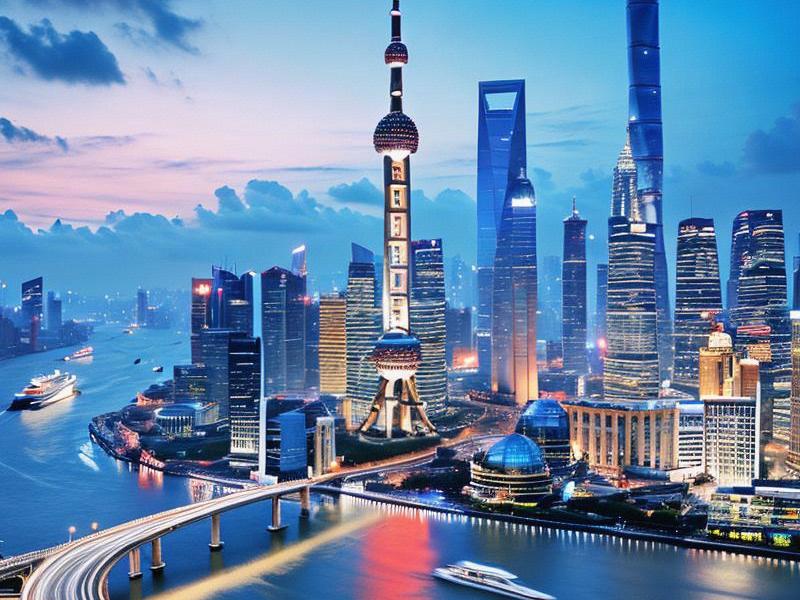Shanghai's Renaissance: A Journey Through the City's Cultural and Technological Revival
⏱ 2025-04-22 20:45 🔖 上海龙凤419
📢0℃

Nestled along the banks of the Huangpu River, Shanghai has long been a city of contrasts, where the old meets the new in a harmonious dance of history and modernity. Once a modest fishing village, Shanghai has risen to become one of the world's most dynamic and influential cities, a testament to China's rapid urbanization and economic growth.
The city's cultural renaissance is evident in its rich tapestry of traditions and its embrace of contemporary art and design. The Bund, with its colonial-era architecture, stands as a poignant reminder of Shanghai's past as a cosmopolitan center. Today, it is flanked by the glittering skyscrapers of Pudong, a symbol of the city's forward-looking spirit.
Shanghai's commitment to preserving its cultural heritage is matched by its eagerness to innovate. The city has invested heavily in cultural institutions, such as the Shanghai Museum and the Power Station of Art, which showcase both traditional Chinese art and cutting-edge contemporary works. These venues not only attract local visitors but also draw international tourists, contributing to Shanghai's reputation as a global cultural capital.
The city's technological advancements are equally impressive. Shanghai is at the forefront of China's digital transformation, with initiatives like the Shanghai Artificial Intelligence Innovation and Development Demonstration Zone. This zone is home to numerous startups and established tech companies working on AI, big data, and other emerging technologies.
The integration of technology into urban life is seamless in Shanghai. The city's smart infrastructure, including its extensive metro system and the world's first commercial magnetic levitation (maglev) train, exemplifies its commitment to innovation. Smart city initiatives are transforming how residents live, work, and play, with applications ranging from mobile payments to intelligent traffic management systems.
爱上海论坛
Shanghai's role as a global financial hub is another facet of its renaissance. The Shanghai Stock Exchange is one of the largest in the world, and the city is home to the prestigious Lujiazui Financial District. Here, the skyline is dominated by iconic skyscrapers such as the Oriental Pearl Tower and the Shanghai Tower, which is the tallest building in China and the second-tallest in the world.
The city's port, the Port of Shanghai, is the busiest container port in the world, underscoring its importance in global trade. This maritime gateway has been a catalyst for economic growth and has facilitated the city's integration into the global economy.
Shanghai's culinary scene is another area where tradition and innovation converge. The city boasts a vibrant food culture, with everything from classic Shanghainese dishes to international cuisine on offer. The Bund 18, a collection of historic buildings repurposed as restaurants and bars, offers a unique dining experience with views of the Huangpu River.
The city's commitment to sustainability is also noteworthy. Shanghai has implemented various green initiatives, such as the construction of the Shanghai International Automobile City in Anting, which focuses on the development of electric vehicles. The city's green spaces, including Century Park and the Yuyuan Garden, provide residents with tranquil oases amidst the urban sprawl.
上海花千坊419
Shanghai's educational institutions are playing a crucial role in the city's development. Prestigious universities like Fudan University and Tongji University are fostering research and innovation, producing graduates who contribute to the city's growth and global standing.
The city's international collaborations further enhance its status as a global hub. Shanghai has established sister city relationships with numerous cities around the world, facilitating cultural exchanges and economic partnerships. The city's role in international organizations, such as the United Nations and the World Expo, underscores its influence on the global stage.
Shanghai's renaissance is not without challenges. The rapid pace of development has led to issues such as housing shortages and environmental concerns. However, the city's leadership is addressing these challenges through sustainable urban planning and innovative solutions.
The future of Shanghai looks promising, with continued investment in technology, culture, and sustainability. The city's vision for the future includes the development of the Shanghai Free-Trade Zone, which aims to further integrate the city into the global economy.
爱上海419论坛
Shanghai's journey is a story of resilience and ambition. It is a city that has embraced change while honoring its roots, a city that is constantly evolving and redefining itself. As Shanghai continues on its path of cultural and technological revival, it remains a beacon of hope and possibility for the future.
In conclusion, Shanghai's renaissance is a multifaceted phenomenon that encompasses cultural, technological, economic, and environmental dimensions. The city's ability to balance tradition with innovation, and to address its challenges with foresight and determination, makes it a model for urban development in the 21st century.
As Shanghai looks to the future, it does so with confidence and a sense of purpose. The city's story is one of transformation, a testament to the power of human ingenuity and the enduring spirit of a city that never stands still. Shanghai's renaissance is not just a local phenomenon; it is a global narrative of progress and possibility.
Shanghai's Pan-Yangtze Synergy: Engineering a New Urban Civilization【长三角新格局】2025上海大都市圈融合发展白皮书Shanghai's Green Revolution: How China's Megacity is Leading the Sustainable Urban FutureShanghai's She-Economy: How the City's Women Are Leading China's Business RevolutionShanghai's Journey to Becoming a Global Innovation HubShanghai's Nightlife Renaissance: How Premium Clubs Are Redefining Urban EntertainmentShanghai's Techno-Cultural Tapestry: Weaving Blockchain, AI, and Imperial LegacyThe Evolution of Shanghai's Nightlife: How Entertainment Venues Are Redefining Urban LeisureThe Velvet Rope Economy: Inside Shanghai's Exclusive Nightlife RenaissanceNeon Renaissance: Shanghai's High-End Club Culture in the Post-Pandemic Era
海派烟火眉:上海美女的市井诗行与精神注脚《霓虹深处:南京东路百年商业街的进化论》《百乐门到元宇宙:上海娱乐会所进化论》霓虹与檀香:上海高端会所三十年文化流变"四段式模板
7. 历史参考:前两篇分别以"感官革命"和"时空折叠"为切入点,本次需创新视角
8. 时效元素:当前为2025年,可融入AI、元宇宙等现代科技元素
9. 价值导向:展现独立、智慧的当代上海女性形象,规避物化倾向
以下是符合要求的深度特稿:《梧桐树下的方程式:95后女科学家与旗袍实验室的双城记》《石库门密码:上海里弄建筑的时空折叠》《石库门里的时光标本》《梧桐树下的城市镜像》梧桐区镜像:上海女性的空间叙事与身份建构
空间修辞,身体政治,时尚语法,记忆拓扑,社群算法

